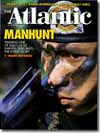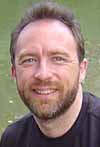 What is the difference between speculation and solid reporting, between passing along unverified rumors and nailing down your facts? Very often it comes down to thoroughness. This section offers advice on how to go the extra yard to inform your readers.
What is the difference between speculation and solid reporting, between passing along unverified rumors and nailing down your facts? Very often it comes down to thoroughness. This section offers advice on how to go the extra yard to inform your readers.
Professional reporters try to learn as much as they can about a topic. It’s better to know much more than you publish than to leave big holes in your story. The best reporters always want to make one more call, check with one more source. (And the last question to ask at all interviews is, “Who else should I talk with about this?”)
In a Web-enabled world, thoroughness means more than asking questions of the people in our address books. It also means asking our readers for your input. Professionals tend not to do this; citizen journalists can be less concerned with competitive issues and more concerned with getting it right.
Straight from the source
 Video interview: A fact-checker for the Atlantic magazine reveals the methodology she uses to review articles before publication.
Video interview: A fact-checker for the Atlantic magazine reveals the methodology she uses to review articles before publication.
Updating breaking news
 Article: On the Web, we should update breaking news as we learn more. Why not expand that approach — borrowing from the AP and Wikipedia — to other articles as well? (photo by Greg Turner)
Article: On the Web, we should update breaking news as we learn more. Why not expand that approach — borrowing from the AP and Wikipedia — to other articles as well? (photo by Greg Turner)
Jimmy Wales on collective intelligence
 Video: An interview with Jimmy Wales, founder of Wikipedia, about thoroughness, the wisdom of the crowd, and other aspects of collaborative media.
Video: An interview with Jimmy Wales, founder of Wikipedia, about thoroughness, the wisdom of the crowd, and other aspects of collaborative media.
Freedom of information
 Article: The Freedom of Information Act and state open-records laws are available to everyone — not just professional journalists. Here’s why they matter and how you can get started in using them. (photo by PartsnPieces)
Article: The Freedom of Information Act and state open-records laws are available to everyone — not just professional journalists. Here’s why they matter and how you can get started in using them. (photo by PartsnPieces)
Thoroughness resources
 Online directory: Tips and resources for doing thorough reporting, from journalism organizations and independent sites.
Online directory: Tips and resources for doing thorough reporting, from journalism organizations and independent sites.
